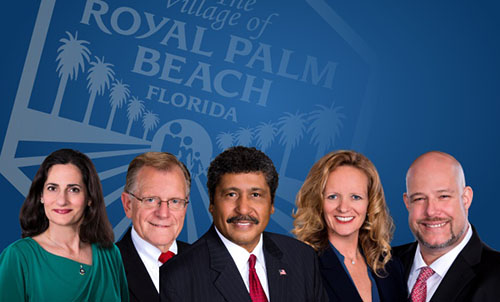After countless hours of planning, development, negotiations and design, the long-planned Tuttle Royale project in Royal Palm Beach is about to kick into high gear. On Thursday, Nov. 17, the Royal Palm Beach Village Council approved several items related to the project, including the rules around the new mixed-use social center (MXS) designation that will be applied for the first time at Tuttle Royale.
The project, led by developer Brian Tuttle, is located on the south side of Southern Blvd., just west of State Road 7. Tuttle was joined at the meeting by representatives from the planning firm Urban Design Studio.
“At the last council meeting, the council heard a presentation from Tuttle Royale representatives, and they requested an expedited process,” Village Manager Ray Liggins said. “Since then, we have come up with a method to reduce the number of days from 21 to 14 as it relates to staff review time and the way we set up the TSR [Technical Staff Review] meetings.”
With the project already in progress, Liggins explained the proposed cost agreement with Tuttle Royale will adjust the timeline for staff providing written recommendations. The item passed unanimously.
With a new timeline in place, the next step was to approve the Tuttle Royale master plan, allowing for the addition of just over nine acres of land to the parcel. This brings the 10-pod project up from 156 acres to over 165 total acres. This measure was also approved unanimously.
The new MXS land use designation will apply to a portion of the property. Nearly 32 acres of land will shift from the village’s standard commercial designation to MXS, and an additional 9.289 acres will go from the county’s low residential land use designation to MXS. The application for these changes was also approved unanimously.
The bulk of the discussion was around the rules for the MXS designation.
Planning & Zoning Director Bradford O’Brien provided a highlighted presentation summarizing the MXS land use designation that was adopted by the council in September. He recommended that the council address the landscaping requirements and be a bit more specific regarding the canopy trees and palm tree substitutions.
“I would suggest that we make that palm tree something of more significance, so that a sabal palm or Christmas palm couldn’t be substituted for a shade tree,” O’Brien said. “Maybe something where the language would state a royal palm, which has a canopy similar to a shade tree.”
The second reading of the ordinance will reflect the updated language.
Before Urban Design representative Lentzy Jean-Louis began a detailed presentation of the form-based code for the land, Tuttle stepped in to expand on the concept of a form-based code.
“It took me almost a year to figure out what they were talking about,” Tuttle said. “What is different about this — this defines exactly what you are getting within a very small fluctuation, and it has got all the little details. This determines what the site plan is. We can make sure it fits every little corner of this. This is the only form-based code I’ve ever worked with.”
He then encouraged the council to stop Jean-Louis and ask questions at any point during the presentation.
When Vice Mayor Selena Samios questioned whether this meant variance requests would be coming, Tuttle said it was possible, but the requests would be minor.
In the presentation by Jean-Louis, the council received details on everything from parking designations to the types of special public events that can take place there.
Samios is familiar with Abacoa, a similar type of project, and said that the most common complaint she heard from its residents was about the noise. Tuttle responded that all residents will be required to sign a waiver acknowledging they are living next to a social center, and that loud music can play until midnight.
Samios wasn’t convinced.
“I will tell you right now, all of those people who live in Abacoa and Harbourside signed those agreements and still complain,” she said. “Just like how all of the people who moved into Ibis knew that State Road 7 was going to go through, and they’re still complaining.”
Tuttle noted that the sound code was not in the plan. As the project moves forward, he intends to hire sound specialists to perform sound studies. Then Urban Design will present a suggested sound code for the MXS district. He said the apartments over the commercial units are designed with young professionals in mind more than families. Liggins noted there are sound codes in place that will apply, but the existing codes do not yet apply to MXS.
Tuttle noted that future plans will include a request for one bar to be allowed in the development, but it is not yet in the plan. The owner of Blue Martini has expressed an interest in putting a bar in the development, and he wanted the council to think about the potential for such a business to be added.
After clarifying the suggestions O’Brien made regarding canopy trees, the council approved the first reading with a revision to change the language allowing that one royal palm tree can be substituted for one canopy tree. It was approved unanimously.








